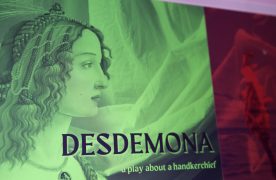We live in a time obsessed with the idea of originality.
Just scroll through TikTok, and you will see people trying to gatekeep the most absurd things, as if the worst crime is liking something someone else liked first.

Inspiration seems to have an expiration date.
Yet, everywhere you look, you will see the same styles, references and aesthetics repeating in cycles. Everyone’s inspiration becomes eerily similar to one another, so much so that someone is always accused of copying.
Nothing is original anymore, but maybe there’s nothing wrong with that.
Remixing is not a new concept.
Shakespeare stole plots from old myths. Andy Warhol screen-printed Campbell’s soup cans and called it high art. Remixing really is about revitalizing — recontextualizing— something that already exists.
Sofia Coppola’s “Marie Antoinette” is a quintessential example of remix culture in film. Her 2006 adaptation transformed the real-life story of France’s last queen into a dreamy coming-of-age film.
Coppola paired 18th-century visual aesthetics and themes with modern music — powdered wigs and panniers set to New Order and The Strokes, glittering desserts and candy-colored interiors captured as if they belonged in a Vogue editorial.
The historical narrative was basically the same as the one in your seventh-grade history textbook, but the tone was changed into something decadent.
It was not about producing an exact historical biopic in terms of accuracy — it was about looking at the historical narrative through the perspective of the young queen and translating the emotional world of this misunderstood girl to the public.
A remix reshapes the familiar into something that feels new.
That said, it is not so easy in practice.
Recently, I have become a little obsessed with the concept of being totally true to my authentic self. I want to feel like my taste communicates something about me that can’t be copied.
When I look at the things I am drawn to — lace-trimmed camis, fairy-lit bedrooms, burning incense on early mornings, Anaïs Nin quotes and fleeting shots of Sophie Marceau in “L’Étudiante” — I can’t help but feel like I have seen it all before. I’ve come across it on Instagram, Pinterest and other girls’ profiles who love Sylvia Plath and collect antique perfume bottles.
In those moments, I spiral a little.
Am I without substance? Am I just mimicking a vibe? Have I internalized an aesthetic so thoroughly that I have mistaken it for who I am?
The reality is that maybe we have done it all. Maybe every aesthetic has been named, boxed and tagged. But that doesn’t mean our taste isn’t real. I still believe every curation is still a marker of someone’s identity.
Fashion is where this plays out most clearly. You can wear the same slip dress as someone else, yet somehow tell a different story. One girl may wear hers with pearls and a satin bow, channeling Old Hollywood. Another girl might style hers with an oversized sweater, scuffed Mary Janes and a worn-out tote full of heavy books.
This is what makes aesthetic authenticity different from originality.
We don’t need more innovation. We need more intention.
Playing with your identity and choosing something purposely is a form of authorship — even if you didn’t create it.
So, how do you make something your own? You collect and you complicate.
For this, I recently created a private Pinterest board, uncurated, where I pin anything that resonates with me.
So far, it goes from pictures of Margot Tenenbaum, floral wallpapers and lipstick smeared on the edge of a mug. Although it might look like your typical coquette French girl persona, I know deeply that it is simply just “so me.”
So sure, maybe you fit an aesthetic. But you are also a filter, a moodboard that can’t be completely replicated. In a world where everything has been done, your perspective is the only thing that can’t be duplicated.
At the end of the day, we’re all stealing. But the truth is, if you do it with so much care and specificity, it becomes undoubtedly yours.














